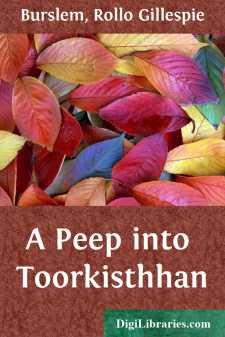Fiction
- Action & Adventure 180
- Biographical 15
- Christian 59
- Classics 6965
- Coming of Age 5
- Contemporary Women 3
- Erotica 8
- Espionage/Intrigue 12
- Fairy Tales, Folklore & Mythology 236
- Family Life 169
- Fantasy 117
- Gay 1
- General 596
- Ghost 32
- Historical 808
- Horror 43
- Humorous 160
- Jewish 25
- Legal 4
- Medical 22
- Mystery & Detective 315
- Political 49
- Psychological 41
- Religious 64
- Romance 159
- Sagas 11
- Science Fiction 730
- Sea Stories 113
- Short Stories (single author) 537
- Sports 10
- Suspense 1
- Technological 8
- Thrillers 2
- Urban Life 31
- Visionary & Metaphysical 1
- War & Military 173
- Westerns 199
Fiction Books
Sort by:
by:
Charles Reade
CHAPTER I. THE POOR MAN'S CHILD. Two worn travellers, a young man and a fair girl about four years old, sat on the towing-path by the side of the Trent. The young man had his coat off, by which you might infer it was very hot; but no, it was a keen October day, and an east wind sweeping down the river. The coat was wrapped tightly round the little girl, so that only her fair face with blue eyes...
more...
CHAPTER I "Maraton has come! Maraton! Maraton is here!" Across Soho, threading his way with devilish ingenuity through mazes of narrow streets, scattering with his hooter little groups of gibbering, swarthy foreigners, Aaron Thurnbrein, bent double over his ancient bicycle, sped on his way towards the Commercial Road and eastwards. With narrow cheeks smeared with dust, yellow teeth showing...
more...
CHAPTER I. During the summer of 1840, the aspect of the political horizon in AffghanistÐâÐÐn afforded but slight grounds for prognosticating the awful catastrophe which two short years after befel the British arms. Dost Mahommed had not yet given himself up, but was a fugitive, and detained by the King of Bokhara, while many of the principal Sirdars had already tendered their allegiance...
more...
by:
O. F. Walton
CHAPTER I ROSALIE Rain, rain, rain! How mercilessly it fell on the Fair-field that Sunday afternoon! Every moment the pools increased and the mud became thicker. How dismal the fair looked then! On Saturday evening it had been brilliantly lighted with rows of flaring naphtha-lights; and the grand shows, in the most aristocratic part of the field, had been illuminated with crosses, stars, anchors, and...
more...
by:
Henry James
I Intending to sail for America in the early part of June, I determined to spend the interval of six weeks in England, to which country my mind's eye only had as yet been introduced. I had formed in Italy and France a resolute preference for old inns, considering that what they sometimes cost the ungratified body they repay the delighted mind. On my arrival in London, therefore, I lodged at a...
more...
INTRODUCTION A CRITICAL SURVEY OF AMERICAN HISTORY In the Manner of William Lyon Phelps On a memorable evening in the year 1904 I witnessed the opening performance of Maude Adams in "Peter Pan". Nothing in the world can describe the tremendous enthusiasm of that night! I shall never forget the moment when Peter came to the front of the stage and asked the audience if we believed in fairies. I...
more...
by:
Angela Brazil
A School Election It was precisely five minutes past eleven on the first day of the autumn term, and Avondale College, which for seven whole weeks had been lonely and deserted, and given over to the tender mercies of paperhangers, painters, and charwomen, once more presented its wonted aspect of life and bustle. The reopening was a very important event in the opinion of everybody concerned, partly...
more...
I. We first met Glendenning on the Canadian boat which carries you down the rapids of the St. Lawrence from Kingston and leaves you at Montreal. When we saw a handsome young clergyman across the promenade-deck looking up from his guide-book toward us, now and again, as if in default of knowing any one else he would be very willing to know us, we decided that I must make his acquaintance. He was...
more...
by:
Thomas Hardy
Chapter I 'A fair vestal, throned in the west' Elfride Swancourt was a girl whose emotions lay very near the surface. Their nature more precisely, and as modified by the creeping hours of time, was known only to those who watched the circumstances of her history. Personally, she was the combination of very interesting particulars, whose rarity, however, lay in the combination itself rather...
more...
CHAPTER I "It's plum amazin' ter heer ye norate thet ye've done been tradin' and hagglin' with old man McGivins long enough ter buy his logs offen him and yit ye hain't never met up with Alexander. I kain't hardly fathom hit noways." The shambling mountaineer stretched himself to his lean length of six feet two, and wagged an incredulous head. Out of pale eyes...
more...











